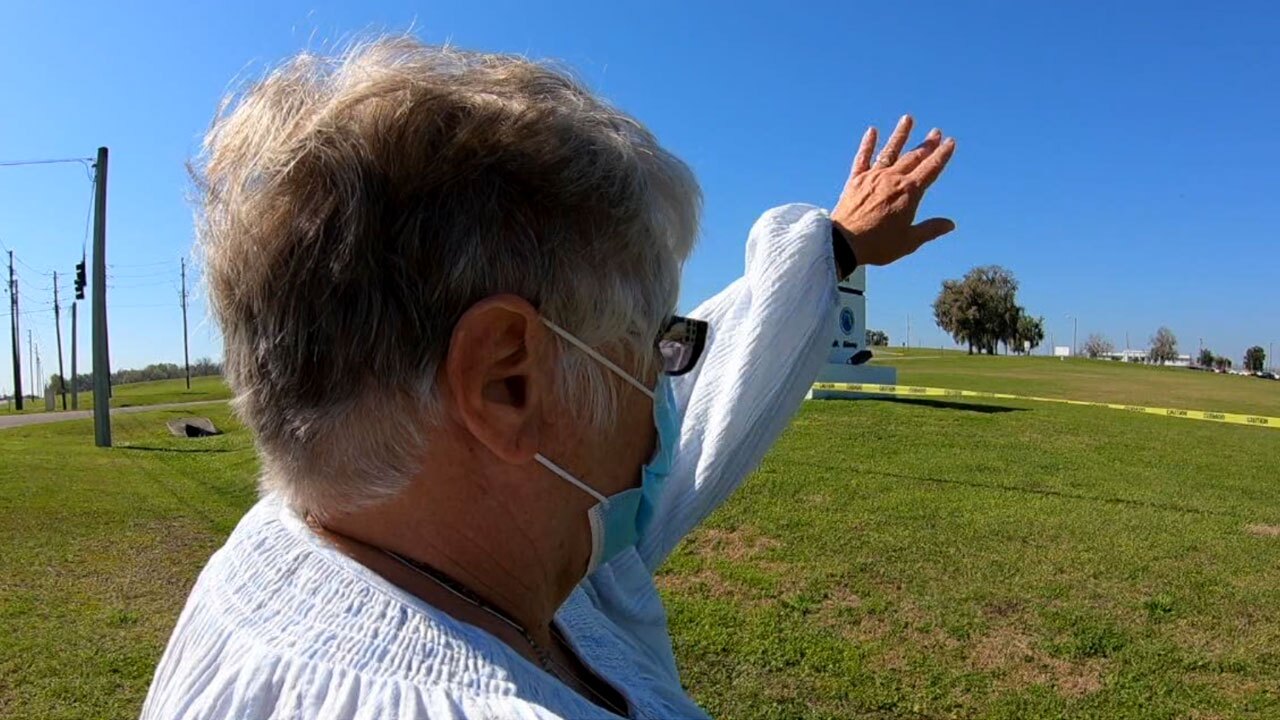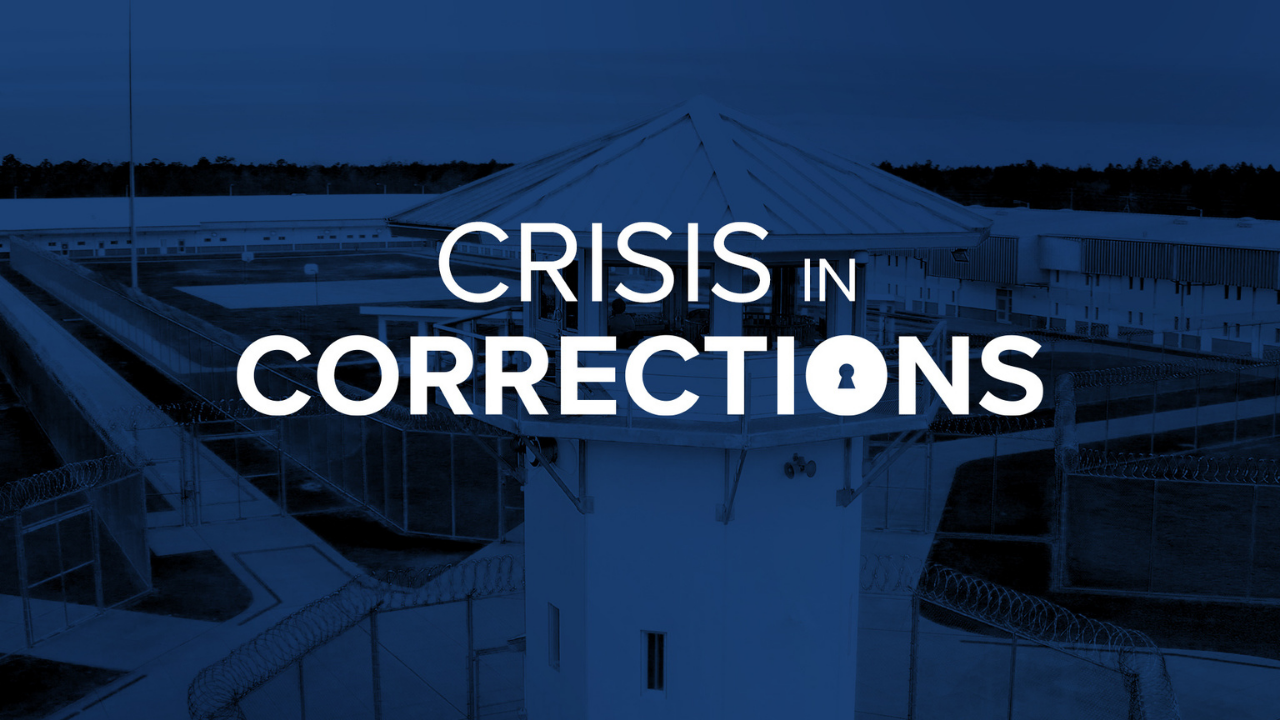TALLAHASSEE, Fla. — A critical staffing shortage within Florida’s state prisons threatens the safety of officers, inmates, and the public.
The ABC Action News I-Team uncovered the crisis in corrections is also costing taxpayers millions in overtime, reducing programs to educate, and train inmates. It also may trigger a mass release.
“The Department of Corrections is in collapse”
Beneath unmanned watchtowers and behind razor wire fences, the nation’s third-largest prison system is falling apart. Of 18,000 security positions in the Florida Department of Corrections, more than 5,500 are vacant.
“The Department of Corrections is in collapse,” said Florida Senator Jeff Brandes (R-St. Petersburg).

“The problem is, when you have prison crisis, it can lead to terrible, terrible outcomes,” Brandes said.
The staffing shortage is triggering the closure of prisons, work camps, and work release centers, forcing the state to pack inmates into hellishly hot facilities, where some have to sleep on floors.
“God forbid we have a riot at any of our prisons. We’re gonna have a lot of hurt people, dead people,” said Florida Representative Dianne Hart (D-Tampa).

Florida lawmakers will return to Tallahassee for the 2022 legislative session with a mandate to fix Florida’s overcrowded, understaffed and dangerous prisons. And while many may think prison reform won't impact them, they would be wrong.
“If things get to a critical mass, then the Department of Corrections Secretary has to do a structured release of certain inmates. We are inches away from emergency release in Florida,” Brandes said. “It is gonna be people who should be incarcerated that are going to be released early.”
RELATED STORY: Shortage of health care staff in Florida prisons increases danger, retired nurse says
At a time when restaurant, retail and service workers are hard to find; it’s nearly impossible to recruit and keep corrections officers.
“The starting salary for corrections officers is about $34,000 a year. And about 40 percent of our corrections officers will leave within the first year, 60 percent will leave within two years,” Brandes said.
Working conditions are better almost anywhere else.
“85 percent of our facilities are not air-conditioned in the state. And while people say that’s fine for the inmates, but try to recruit a correction officer to work in an un-air-conditioned space in the middle of August in Florida,” Brandes said.
One corrections officer assigned to guard up to 250 Inmates
Florida Department of Corrections Deputy Secretary Ricky Dixon recently briefed lawmakers.
“Adequately and safely staffing a prison requires a vacancy rate around 3 percent. And we’re at 28 percent,” he said in a House Criminal Justice Public Safety subcommittee hearing in September.
He said federal standards require four guards for each dorm, which house up to 250 inmates. Most Florida prisons, Dixon says, have one officer, per dorm, per shift.
“They have no one to back them up. They’re alone and they’re at the mercy of other inmates, not staff, but other inmates to come to their rescue,” Dixon said.
Footage linked to ABC-15 in Phoenix from a close-custody facility showed guards chased down and beaten by inmates after cell door locks malfunctioned.
In Florida, most inmates are in dorm facilities. No bars separate them from officers, who often have little experience.
18-year-old recruits and people with prior criminal histories hired
“We’ve moved down to hiring 18-year-olds. So kids fresh out of high school now,” Brandes said.
Laurette Philipsen is a prison reform advocate with the non-profit group Florida Cares.

She was previously incarcerated at Lowell Correctional Institution.
“You can tell when an officer is new if they’re actually afraid. You can see it in their eyes,” Philipsen said. “It is a very dangerous situation. “
Philipsen used open records requests to obtain job applications and disciplinary records for officers who worked at Lowell. One guard had a prior criminal history.
“He had been charged with domestic battery. His charges were dismissed. He also had a breach of peace, which he pled guilty to,” she said.
That officer resigned from FDC and was named in a lawsuit for allegedly nearly beating a female inmate to death, causing her to become paralyzed.
“We should be doing a much better job on checking backgrounds. If you go back and look at what’s happened, those have been some of our worst offenders… people who already had issues… spousal abuse, and that kind of stuff,” Rep. Hart said.
Another officer’s disciplinary record showed more than 40 infractions.
“He had 22 improper conducts, he had 10 excessive uses of force, he had two verbal abuses and he had seven sexually related complaints,” Philipsen said.
Records show that the officer resigned while under investigation, but was hired to work at Lowell a year later by the people who investigated him.
“And not only that, he was able to move through the ranks of the Department of Corrections from a correctional officer all the way up to a lieutenant.
That officer was eventually terminated after he was charged with sexually abusing his stepdaughter. Florida Department of Corrections is recruiting with flashy online videos and offering $1,000 sign-on bonuses.
Rural areas no longer provide as many prison employees
“I’ve been to facilities in the past month where they had 135 vacancies at that facility and they only had three applicants,” Brandes said.
Rep. Hart said it used to be easier to find recruits in the rural communities where most prisons are located.
“It’s generational. That’s all the family has done. Their children become that, their uncle and cousins… everybody works in these facilities together,” Hart said.
But what has worked for previous generations is not working now in many of those communities.
20-year-old Triston Weaver was recruited while he was a student at Dixie County High School to work at the Cross City Correctional Institution.
“I didn’t want to go work in an environment like that,” Weaver said.
He was recently offered a job as a Dixie County Sheriff’s Deputy. He said his mother has worked at the prison for about 18 years and he worries about her all the time.
“She’s spending 16 hours a day there. Just filling in for the people that don’t come in, or because they’re short-staffed. They ain’t got people to come in,” Weaver said.
Deputy Secretary Dixon told lawmakers that’s happening statewide.
Overtime payments soar, programs to help inmates are cut
“The state’s gone from spending $35 million on overtime a year to $103 million in overtime this year,” Dixon said.
He said staffing shortages mean education, drug rehab, and training programs are cut, leaving inmates with no new skills when they exit, and nothing to do inside.
“Inmate idleness has contributed to some of the major, notorious incidents around our nation over the years. And you couple idleness with under-staffing and fatigue, and you see why we’re so concerned and why this is such a critical issue,” Dixon said.

“We don’t have a Department of Corrections. We have a Department of Warehousing,” Brandes said. “Right now, Florida has 80,000 inmates incarcerated and 40,000 of them can’t read at the sixth-grade level and most of them are getting no education while they’re incarcerated.”
“We’ve taught you nothing. You don’t have a GED, you didn’t get any training. What do we expect other than for you to return? “ Hart said.
The number of those incarcerated who earned GEDs dropped from 3,000 in 2010 to only 1,000 last year.
“A majority of the people in the prison system are going to get out. These people are gonna come live in your neighborhoods. They’re going to be in your communities. And they’re either going to get out being prepared to re-enter society, or they’re gonna get out as better criminals because that’s what they learned when they were incarcerated,” Brandes said.
If you have a story you’d like the I-Team to investigate, email us at adam@abcactionnews.com.

In the ABC Action News series, Crisis in Corrections, the I-Team reveals the factors building to what state leaders call a breaking point in the Florida Department of Corrections. What’s at stake in the state’s largest agency and the third-largest prison system in the country and the impact beyond prison gates.



